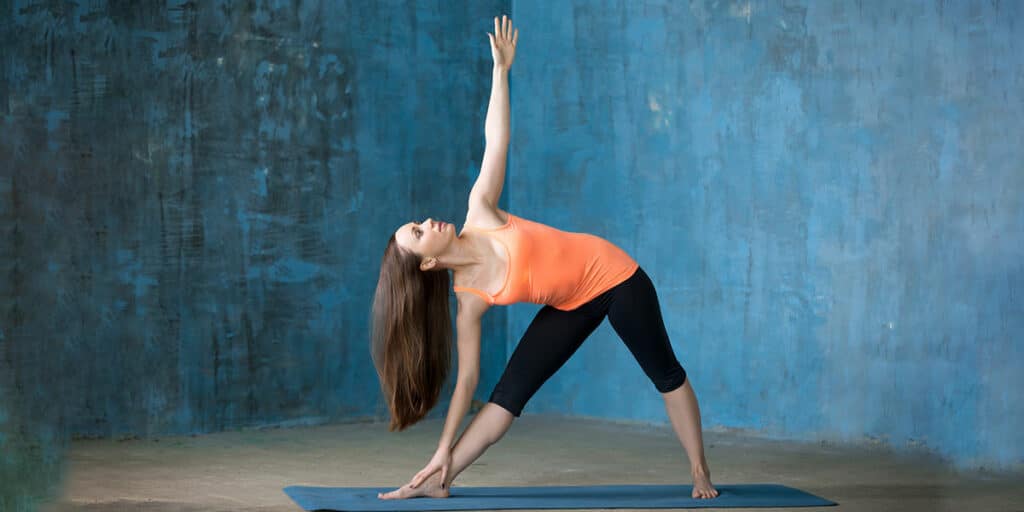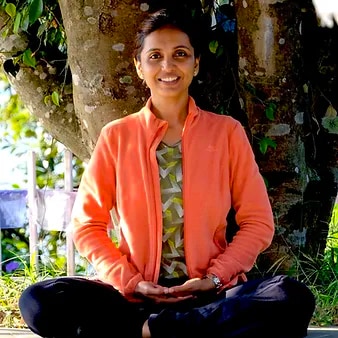Benefits of Vinyasa Yoga
by Prutha Bhatt

What is Vinyasa Yoga?
Vinyasa Yoga is a style in which the mind, body, and breath are well integrated to achieve physical and spiritual benefits. Shri T. Krishnamacharya’s ‘Vinyasa Krama Yoga’ focuses on a gradual and sequential progression. This is accomplished by adhering to a structured sequence and arrangement of asanas, pranayama, and other yogic methods customized to each individual and their unique capabilities.
The series of fluid and transitional movements, commonly known as ‘Vinyasa’, connects the asanas in Shri T. Krisnamacharya’s ‘Vinyasa krama’ and Shri Pattabhi Jois’s ‘Ashtanga Vinyasa’. This style should be practised with an emphasis on steady and comfortable postures along with coordinated and rhythmic breathing.‘Ujjayi’ breath is essential in Vinyasa yoga, helping practitioners to deepen their practice and connect body and mind.
Benefits of Vinyasa Yoga:
- Vinyasa yoga is ‘Sarva-anga sadhana’ that benefits all parts of the body. Long-term practice yields benefits for the musculoskeletal system as well as other systems.
- ‘Sama-kaya’: Our health relies on the body’s internal mechanisms. This practice helps balance them.
- Well-structured, sequential vinyasa practice helps improve muscle tone and joint health while nourishing various tissues in the body.
- During asana practice, skeletal muscles undergo isotonic eccentric and concentric contractions while one is transitioning between poses. Isometric contractions occur while statically holding a posture against gravity. This helps to build muscle strength without causing the muscle fibres to change in length. As a result, Vinyasa yoga practitioners tend to develop lean and strong muscles, rather than bulky muscles.
- Gentle pressure on the bones during asanas improves bone density by enhancing calcium absorption through positive metabolic feedback from the Hypothalamus.
- Systematic progression in asana helps improve joint range of motion due to reduced muscular tension.
- Venous return improves due to the gentle compression of the veins by the contractions of skeletal muscles. Rhythmic, slow, and controlled breathing plays a vital role in improving blood circulation. Practising inverted asanas helps bring venous blood back to the heart due to gravity, thereby enhancing the functioning of the cardio-respiratory system. There is an improvement in pranic circulation along with blood and lymphatic circulation. Maintaining an uninterrupted flow of body fluids and vital energy (prana) is crucial for ensuring our bodies remain healthy and free from diseases.
- Ujjayi breathing, along with postures, bandha (locks), and drishti (gaze), make Vinyasa Yoga a comprehensive and integrated practice of asanas, pranayama, and meditation. It not only impacts the physical body but also has a positive influence on the pranic and mental bodies. The use of drishti (gaze) helps to maintain single-pointed focus and enhances concentration not only during yoga practice but also in daily life.
References:
The complete book of Vinyasa Yoga by Srivatsa Ramaswami
The Vinyasa Krama Yoga Practice Manual compiled by Stephen Brandon
Yoga Sequencing by Mark Stephens
Anatomy & Physiology: Yogic context by Dr. Sharadchandra Bhalekar
About the Author

Prutha Bhatt
Prutha is a visiting faculty at Yoga Department of Somaiya Vidyavihar University, Mumbai. She is currently pursuing her Ph.D.in Yoga from the same University. She is Qualified for the post of Assistant Professor (Yoga) by clearing the NET Exam conducted by University Grants Commission, India.
